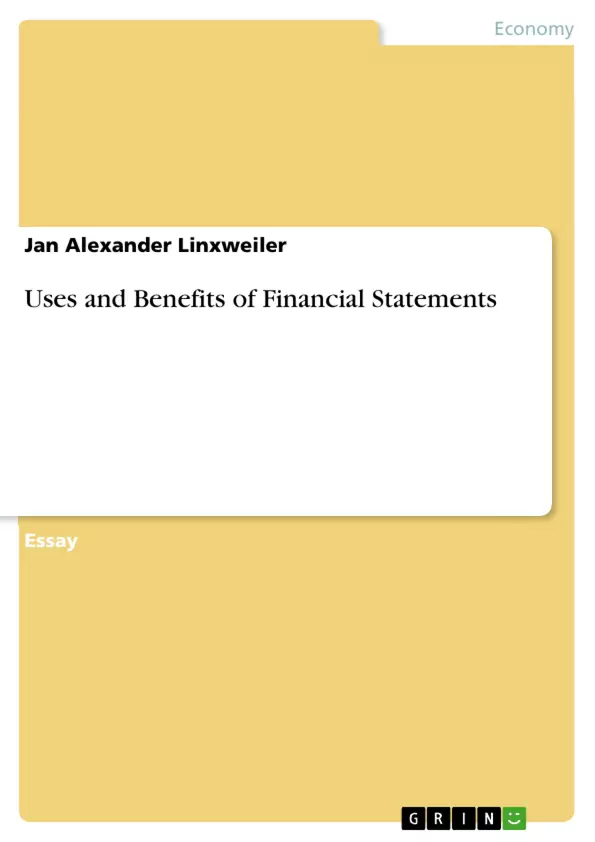The following paper will introduce the uses and benefits of financial statements. In doing so the paper will first introduce the different elements of a financial statement. In a next step the paper will establish how financial statements can be used in financial modeling and how the useful basis for an encompassing analysis. The paper will conclude with the observation that a financial statement provides a transparent insight into the economic positioning of an organization that allows investors and managers alike to act economically efficient.
Table of Contents
- Elements of a Financial Statement
- Income Statement
- Balance Sheet
- Cash Flow Statement
- Segment Revenue and Operating Income (Loss) Statement
- Historical Income Statement
- Financial Operating Segment History
- Yearly Income Statement
- Unearned Revenue Statement
- Financial Statement Modeling
- Company Valuation
- Asset based approach
- Income based approach
- Market based approach
- Project evaluation
Objectives and Key Themes
This paper explores the uses and benefits of financial statements. It introduces the different elements of a financial statement, demonstrates their application in financial modeling, and concludes with the importance of financial statements for transparent economic positioning. The paper emphasizes the role of financial statements in enabling informed decision-making for investors and managers.
- The importance of financial statements for understanding a company's financial position.
- The different elements of financial statements and their respective uses in analysis.
- The application of financial statements in financial modeling and company valuation.
- The role of financial statements in project evaluation and decision-making.
- The benefits of using financial statements for economic efficiency and transparency.
Chapter Summaries
- Elements of a Financial Statement: This chapter introduces the different types of financial statements and explains their specific components. It highlights the importance of each element in providing a comprehensive financial picture of an organization.
- Financial Statement Modeling: This chapter discusses the use of financial statements in creating financial models. It explores the importance of considering the goal of the analysis, the audience, and the cost-benefit balance when constructing financial models. The chapter also provides examples of factors that need to be considered in financial modeling, including macro-economic, micro-economic, company, project, and individual perspectives.
- Company Valuation: This chapter focuses on the use of financial statements in valuing a company. It explains three common approaches: asset-based, income-based, and market-based approaches. The chapter discusses the strengths and limitations of each approach.
- Project Evaluation: This chapter explores the role of financial statement modeling in project evaluation. It outlines different phases of project evaluation, including planning, formative, and summative evaluations. The chapter discusses the various techniques used in project evaluation, such as financial appraisal techniques and risk management tools.
Keywords
Financial statements, company valuation, financial modeling, project evaluation, income statement, balance sheet, cash flow statement, asset-based approach, income-based approach, market-based approach, discounted cash flow (DCF), financial appraisal techniques, risk management, economic efficiency, transparency.
- Quote paper
- Jan Alexander Linxweiler (Author), 2017, Uses and Benefits of Financial Statements, Munich, GRIN Verlag, https://www.grin.com/document/371138



